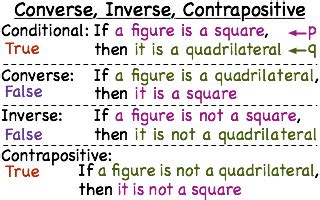Introduction

The English language is a vast and nuanced tapestry, woven with words that carry a multitude of meanings and implications. Among these, the terms “furthermore” and “conversely” stand as antonyms, representing opposing directions of thought and discourse. While “furthermore” signifies a continuation or elaboration of an idea, “conversely” introduces an opposing or contrasting view.
Understanding the Contrast
The key distinction between “furthermore” and “conversely” lies in their respective purposes. “Furthermore” is typically used to add additional information, support, or examples that reinforce the preceding argument or point. For instance, if we state that “Exercise is beneficial for physical health,” we might add “Furthermore, it can improve mental well-being and reduce stress.”
Conversely, “conversely” is employed to introduce a contrasting or opposing viewpoint. This opposition can be either partial or complete. For example, consider the statement: “The decision was made after careful deliberation.” A contrasting view might be introduced as: “Conversely, some argue that the decision was rushed and ill-advised.”
Applications of “Conversely”
The use of “conversely” extends beyond mere opposition. It also serves as a valuable tool for:
- Argument Analysis: By identifying the converse of an argument, we can gain a deeper understanding of its strengths and weaknesses.
- Comparative Reasoning: When comparing two or more ideas or perspectives, “conversely” helps highlight the key differences and similarities.
- Logical Reasoning: In mathematical and philosophical discussions, “conversely” is employed to demonstrate the inverse relationship between two statements.
Examples of “Conversely” in Use
To illustrate the multifaceted applications of “conversely,” let’s explore a few examples:
- Medical Science: “While regular exercise is generally beneficial for health, conversely, excessive exercise can lead to injuries and health complications.”
- Economics: “Increased government spending can stimulate economic growth. Conversely, excessive government borrowing can lead to inflation and debt crises.”
- Ethics: “Lying is generally considered to be morally wrong. Conversely, in certain situations, lying may be justified to protect innocent lives.”
Table 1: Contrasting “Furthermore” and “Conversely”
| Feature | Furthermore | Conversely |
|---|---|---|
| Purpose | Adds additional information | Introduces an opposing viewpoint |
| Conjunction | Used to continue or extend a thought | Used to contrast or oppose a thought |
Tips for Effective Use of “Conversely”
To ensure clarity and precision when using “conversely,” consider the following tips:
- Avoid using “conversely” as a mere synonym for “but.”
- Ensure that the opposing viewpoint introduced by “conversely” is relevant and substantive.
- Use “conversely” sparingly to avoid overwhelming the reader with contrasting perspectives.
Table 2: Strategies for Using “Conversely” Effectively
| Strategy | Description |
|---|---|
| Contrasting Arguments | Use “conversely” to introduce an opposing argument and support it with evidence. |
| Comparative Analysis | Use “conversely” to highlight the key differences and similarities between two or more ideas or perspectives. |
| Logical Reasoning | Use “conversely” to demonstrate the inverse relationship between two statements. |
Pros and Cons of Using “Conversely”
Pros:
- Enhances clarity and logical flow in writing.
- Facilitates critical thinking and comparative analysis.
- Strengthens arguments by presenting opposing viewpoints.
Cons:
- Can be overused, leading to confusion.
- May disrupt the flow of writing if used excessively.
FAQs about “Conversely”
-
What is the meaning of “conversely”?
– “Conversely” means “on the contrary” or “in contrast.” -
How is “conversely” different from “but”?
– “Conversely” introduces a contrasting viewpoint, while “but” simply negates or contradicts a preceding statement. -
Can “conversely” be used to introduce a supporting statement?
– No. “Conversely” is used to introduce opposing viewpoints, not to support existing arguments. -
What is the opposite of “conversely”?
– The opposite of “conversely” is “furthermore.” -
Can “conversely” be used to introduce a sarcastic statement?
– Yes, “conversely” can be used sarcastically to express an opposing viewpoint in a mocking tone. -
What is a creative way to use “conversely”?
– Conversationalist: A person who excels at using “conversely” in conversation to engage in insightful and thought-provoking discussions. -
Table 3: Examples of “Converse” Statements
| Statement | Contrast |
|---|---|
| Exercise is beneficial for health. | Conversely, excessive exercise can lead to injuries. |
| The government should invest in education. | Conversely, some argue that the private sector should take the lead in education. |
| Lying is always wrong. | Conversely, in certain situations, lying may be justified to protect innocent lives. |
- Table 4: Applications of “Converse” in Various Fields
| Field | Application |
|---|---|
| Psychology | Contrasting different theoretical perspectives on human behavior. |
| Philosophy | Exploring the logical consequences of different ethical principles. |
| Economics | Analyzing the potential benefits and drawbacks of different economic policies. |
| Law | Presenting opposing arguments in legal proceedings. |
Conclusion
“Conversely” is an indispensable tool in the English vocabulary, enabling us to present contrasting viewpoints and engage in meaningful discussions. By understanding its nuances and applications, we can enhance our communication skills and foster a deeper understanding of the complex world around us.
